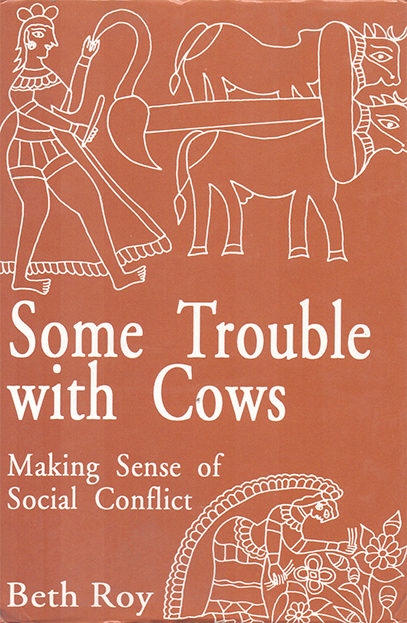- Shop
- Some Trouble with Cows - Making Sense of Social Conflict
Some Trouble with Cows - Making Sense of Social Conflict
https://uplbooks.com/shop/9789840513321-some-trouble-with-cows-making-sense-of-social-conflict-3008 https://uplbooks.com/web/image/product.template/3008/image_1920?unique=90f5a49
| Language: English |
Tags :
Book Info
As constructed from first-person accounts by Hindus and Muslims, the story told here by sociologist Beth Roy vividly describes and analyzes a large-scale riot that profoundly altered life in a Bangladeshi village during the 1950s. Some Trouble with Cows provides a rare glimpse into the hearts and minds of the participants and their families, while touching on a range of broader issues that are vital to the study of communities in conflict: the changing meaning of community; the impact of the state in a locality; the nature of memory; and the force of neighborly enmity in reshaping power relationships during periods of change. Roy came to South Asia to study areas in which hostilities between Hindus and Muslims were endemic in contrast to those in which little hostility existed. She found herself in a Bangladeshi village listening to stories of a large riot of the 1950s. She was surprised. No record of this disturbance appeared in any official record or press report she had found. As the villagers told her what they remembered, they interwove fists of personal grievances, their understandings of wider historic events, and their reflections on the significance of it all, especially in regard to the power relations within their village. As the story unfolds, it suggests some important conclusions. First, a seemingly irrational and archaic conflict was, in reality, a means by which villagers could confront very current and important disputes about the distribution of power and rights in their community. Second, historically defined identities were redefined to reflect a new reality. Third, Roy suggests ways in which these processes illustrate important theoretical issues in psychology and sociology. These conclusions will be of interest to students of relations between ethnic/religious communities, social conflicts, the sociology of violence, and rural South Asia.

Beth Roy
Beth Roy came to South Asia to study areas in which hostilities between Hindus and Muslims were endemic in contrast to those in which little hostility existed. She found herself in a Bangladeshi village listening to stories of a large riot of the 1950s. She was surprised. No record of this disturbance appeared in any official record or press report she had found. As the villagers told her what they remembered, they interwove fists of personal grievances, their understandings of wider historic events, and their reflections on the significance of it all, especially in regard to the power relations within their village. As the story unfolds, it suggests some important conclusions. First, a seemingly irrational and archaic conflict was, in



